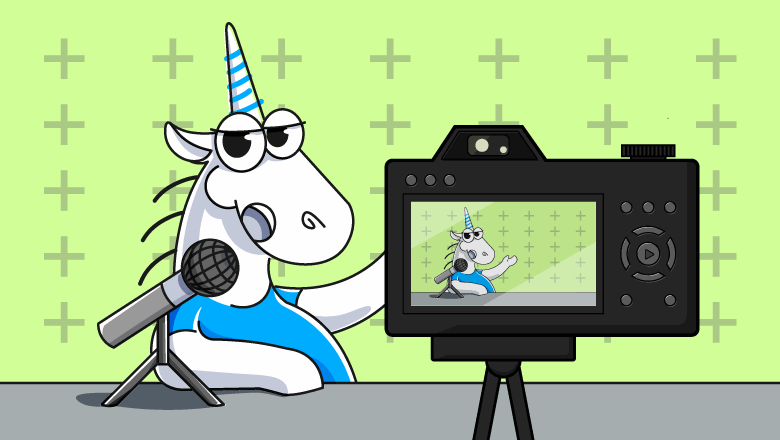
Video is one of the simplest and most attractive formats for information perception. Especially now, in the era of TikTok, Instagram and YouTube. It is not surprising that marketing specialists often choose video format for business promotion.
At PVS-Studio, we try to keep up with the times. While developing our YouTube channel, we experiment a lot: some things work out, and some don't. In this article, we'll tell you our story of working with YouTube and share our experience that can be useful for both beginner YouTube bloggers and channels with a ready-made subscriber base.
Our "before"
I must say we've always been interested in the idea of creating video content. Short entertaining and not-so-short educational videos were already part of our content. However, we didn't have a clear structure and a plan. Do we have something to make videos about? Great! But why do we need to make videos? What's their purpose? Back then, everyone had their own concept of making videos, and we couldn't agree on a common vision.
Then, one day we needed to prepare educational material for our interns. We decided that the video format would work best in this situation, and as a platform, of course, we chose YouTube. The interns liked the videos we made. In addition, these videos helped us reach more than a thousand subscribers on our channel.
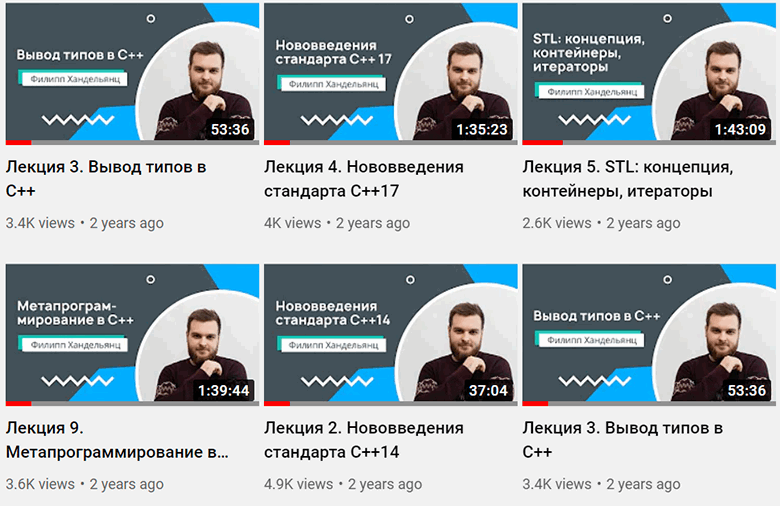
These videos were lectures on C++ programming, which, according to statistics, are still going strong. People started asking for more and more. But the process of making videos, especially video lectures, is super energy-consuming. By the way, we'll get to this issue a little later. Now, let me continue the story.
We realized that giving up the channel is not an option for us, so we decided to get our hands on its promotion. And if it couldn't be video lectures, then we should make helpful videos for developers and at the same time videos about our product.
A video marathon starts...now!
So, we had a clear task — to promote the channel. We wrote a content plan and were ready to be creative. It was time to start the filming process and we decided to think outside the box — we are from marketing department after all. We thought that filming in the office was too simple. It also had its disadvantages. So, we complicated this process a little: gathered speakers, took cameras, tripods and went to the countryside for a week. We called it a video marathon.
I won't go into detail here and describe the organization of this event — my colleague (and concurrently our event manager) has already done this in her article. I'll write about the results and my point of view from the outside perspective.
As it turned out, the final material was not of such high quality as we pictured it in our heads. After editing, only a couple of videos were uploaded to the channel. We lacked experience in almost all stages of video making process: from script writing to video editing. And our vision of the final result varied, not to mention the lack of resources and time. We realized that such a format requires serious improvements if we ever decide to repeat it again. But we're not upset — it was a good experience and we just managed to get away from the usual office routine.
Our "after"
We had uploaded the videos and started thinking about a new strategy for our channel development. To be more precise, for the development of two our channels. Yes, at that time we decided to separate our audience in order not to neglect the English-speaking subscribers, who, admittedly, made up the lion's share of the entire target audience. So we published two twin videos in two languages: Russian and English.
The videos were mainly devoted to our product, the static code analyzer, and how it works. But we planned to film videos on broader topics that were not directly related to the analyzer. We made a filming studio, bought the necessary equipment – in general, we became the real bloggers.
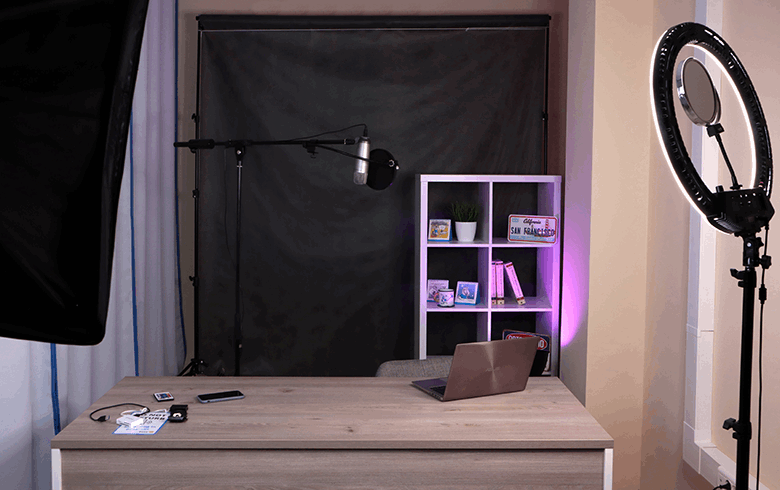
How soon did we realize that we were doing double work, and performance were not increasing? Not for a little while. For about six months, my colleague was handling all the processes, from script writing to video editing, alone. And to cover one topic (read like two videos), it took about a month. Of course, this strategy badly affected the channels' activity and statistics. And it was difficult for my colleague to multitask.
Over time, fortunately, we managed to engage other people in the process and give them part of the work. For example, our designer became a video editor. And I became one of the speakers. From that moment, in general, my story with video marketing began.
Are speakers born that way, or they become so?
Despite the subtitle, it's not story about "successful" success. This story is rather about pushing yourself. It's about the life case that led to something more than originally expected.
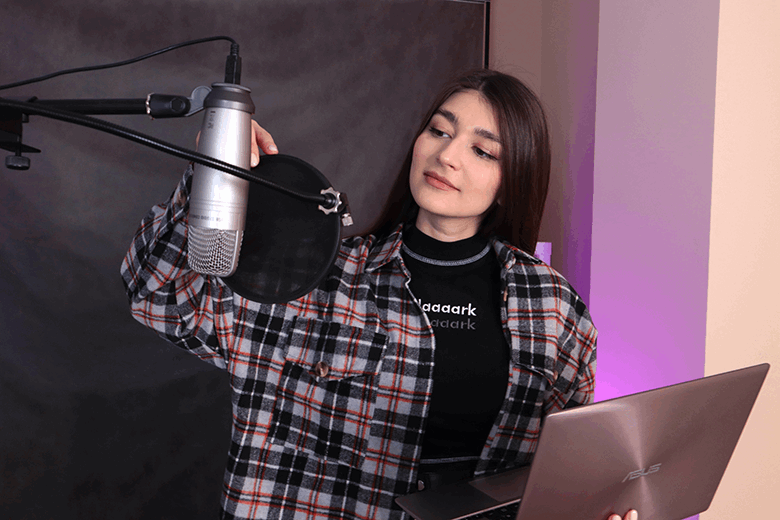
Before my "finest hour" on YouTube, I was in charge of SMM in our company. I was doing social media promotion until I offered my colleague my participation in the video – I wanted to help somehow. There was one condition: videos should be in English. I think it was my inner linguist talking. I just really love English, especially its "melody". In my opinion, it's just the stars have aligned.
Except that I couldn't work in front of the camera and my voice was very quiet and hesitant. Well, to be honest, I wasn't much of the speaker. And it was noticeable, during editing, the volume had to be turned up to the maximum because of my quiet voice.
We are not a broadcast journalism school — why pay attention to that issue at all? It's funny though, this is exactly what I did at school for a while. I took a journalism course, but nothing good came of it. But this time I was lucky – my colleague took everything very seriously. He made me realize that I can improve the quality of my voice and look more confident on camera. You only need the will and some practice.
To better understand the voice anatomy and what can improve the quality of my voice, I sat down and studied the theory for several months. I watched video tutorials, read articles and a book, and took the course. The book and the course helped me the most — I recommend starting to study this issue with them. I must say, I was surprised how many different subtleties there are in this kind of — if you don't mind me saying this — art. And how much having these skills affects many areas of our life: career, relationships, etc.
There are a lot of exercises aimed to eliminate certain problems with the voice. To get used to speaking louder, I started to do it in everyday life, just talked with friends or with strangers (that was even harder). But my main personal battlefield was, of course, our studio.
I started getting better and better with each video — you can compare the very first video featuring me and one of the last. My interest in video marketing grew more and more. Video marketing gives me the chance to do several enjoyable things at once: broadcasting (not to mention broadcasting in English!) and script writing. And now I sometimes give advice to those who have never participated in filming: better ways to say something, what intonation to use, and so on. We manage to engage various people in the process. At the moment, all I have to do is master video editing and I'll be able to take over almost all stages of video production. Right, about that.
Stages of video production
As I said earlier, the process of making a video is not as simple as it seems. It requires a good plan and promotion strategy, technical proficiency, writing, oral and editing skills. What are the production stages of one video in our company?
It all starts with the topic. We evaluate the relevance, usefulness, and our expert knowledge in this field. Most of the time, we write scripts ourselves: we rework our existing content, for example, an article in our blog. Or we turn to programmers for help if the topic is too narrow and requires additional knowledge. It takes from two to four working days to write a script.
When the script is ready, we submit it for translation. I want to note that the writing style of our articles and scripts is quite different. In videos, we use more informal speech. Therefore, our translators are also working to make the translation as "native" as possible. The translation takes from two to three working days.
The most interesting part begins next — filming. We set up and check the equipment, build a composition, and start. We don't have a teleprompter, so we memorize the whole text piece by piece. The text even turns out to be livelier and more interesting. But to save time and effort, we're thinking of getting one of these "technological wonder". Speaking of voice-overs, we record them separately. We just read out the text. All this usually takes one working day.

After that, probably the most difficult stage begins – video editing. Editing is a ton of work that takes the most time and effort. During this stage, unexpected messes can show up that slow down the whole process. For example, a video could have poor sound quality, or some its part wasn't even recorded. But we had such issues only at the beginning of video making. Don't be afraid to make messes. To a greater extent, they helped us perfected our video making process. Now everything is more or less running smoothly and takes from 4 to 6 working days.
The best part begins — the video is edited and we're ready to upload it. But this is not a quick process. In addition to the title, description, cover, and everything else, you also need subtitles. We add subtitles both in Russian and in English. Videos with Russian subtitles help us not to duplicate the work — they replace videos in Russian. Usually, it takes 1-2 hours to add and edit them. It depends on the length of the video.
And finally, it's time to promote the video. We use both content seeding and YouTube paid advertising. Basically, we use Instream and Discovery ad formats. In addition, we cannot fail to use our well-known tool and advertise the channel through integrations with video bloggers.
But it's also important to understand that much depends on the topic. Videos on popular, common topics do not have to be promoted – the audience finds them on its own. You just need to choose a good title that reflects the essence of the video and includes keywords. By the way, the subtitles increase the social media reach. Partly for this reason, we decided to add subtitles. Sometimes there are videos on narrower topics. For example, these videos focus on our product. We immediately put paid advertising behind such videos and add these videos to the site in the corresponding sections. So, the visitors of our website can either read documentation or watch a video. The visitor can decide what format is more convenient for them.
How many marketing specialists do you need?
Basically, as many as you want. In our case, we need two. I'm in charge of the whole video production process (from the idea to the uploading), and my colleague helps me with the promotion. Actually, it depends on the company capabilities and the specialist who is engaged in the process.
For example, for now, I feel comfortable doing the whole process myself and controlling everything. And this is not because I am a "control freak", but because the creative parts are important to me. In addition, our video production process has not yet reached such a scale that it could not be performed by one or two specialists.
We are just getting started and trying different options for the channel development, but something is already beginning to take shape. Video marketing as a separate marketing direction has already proven itself, but it still has plenty of prospects. Maybe our story will inspire you to create and develop your own channel?
In the meantime, we invite you to support our creativity and subscribe to our channel so you won't miss our videos, which we consistently release every month. Our practical tips help programmers make code cleaner, simplify the development process, and learn something new and IT-related. We provide not only educational, but also entertainment content. For example, we recently uploaded the New Year video. It's about bugs that almost ruined everyone's holiday.
The channel is equally useful both for users of our tool and for those who are not familiar with it yet. And we also plan to actively film videos about checking open-source projects. It's a very popular topic on our blog on Habr. There, we show the analysis results and describe the errors of well-known open-source projects.
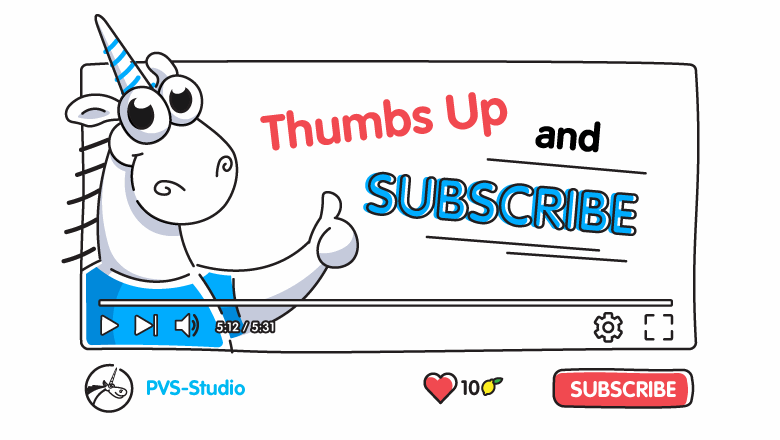
Well, have you already visited our channel and watched videos? :)